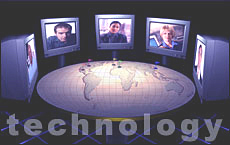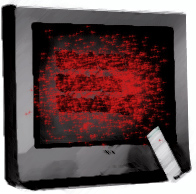
|
There’s a tectonic shift happening in television that will profoundly transform the way we receive news, the news we see, and our ability to access the news of our choice. Benefits for the public have been slow in coming, but suddenly “multicasting” — that’s the hot new word — is on the lips of everybody in TV land.
In this new digital era, the so-called analog, one-channel version of television will soon be as archaic as a 1950 Studebaker. Besides local 24-hour all-news and all-weather channels, over-the-air broadcasters will be able to devise local versions of programming we currently find only on cable.
Programmes covering provincial legislatures and city councils, public hearings, community board meetings, court trials, school board sessions, school lunch menus, school closings, public event schedules, updates on terror alert levels, and disaster warnings, along with documentaries on issues of local concern, free airtime for office-seekers, children’s news and educational shows, and almost anything else station owners can dream up — with simultaneous translation into other languages for the benefit of local non-English-speaking minorities, will be readily available.
Then there’s the datacasting of text: stock market quotes, sports statistics, classified advertising, radio and TV programme schedules, and even electronic newspapers.
Public interest and other advocacy groups are keeping a close eye on the changes, and have expressed concern about the inability, thus far, of broadcasters to promote a variety of news voices, and points of view. In an era when over-the-air television is one of the most potent forces shaping public opinion, a process involving more democratic access to the airwaves will prove an absolute necessity if the collective interests of our communities is to be maintained.


